WHAT IS TURNING MACHINING? THE MOST POPULAR TURNING METHODS IN 2025
1. What is Turning Machining?
Turning machining is one of the most essential metal-cutting processes in mechanical manufacturing. This process utilizes a lathe machine to remove material from a workpiece, creating rotationally symmetrical components such as shafts, flanges, bushings, gears, threads, and various mechanical parts.
In turning, the workpiece is mounted on a chuck or between centers and rotates around the machine’s spindle axis. A cutting tool engages the surface of the workpiece, moving in different directions to shape it according to the required specifications.

Advantages of Turning Machining:
• High precision: Modern CNC lathes can achieve micron-level accuracy.
• Fast machining speed: Turning shortens production time, especially with automated technology.
• Versatile applications: It can process various materials such as steel, aluminum, copper, stainless steel, engineering plastics, titanium, etc.
• Lower production costs: Compared to other machining methods like milling or grinding, turning is more cost-effective due to faster cutting speeds and reduced tool wear.
2. The Most Popular Turning Methods in 2025
With advancements in mechanical engineering, turning technology continues to evolve, incorporating new techniques to enhance efficiency and precision. Below are the most widely used turning methods in 2025.
2.1 Conventional Turning (Manual Turning)
Manual turning is a traditional machining method using a conventional lathe, where the machinist manually controls the cutting process.
Advantages:
• Suitable for single-piece or small-batch production.
• Low investment cost and easy to operate.
• Flexible for machining custom or specialized components.
Disadvantages:
• Precision depends on the machinist’s skill.
• Not ideal for mass production.

Refer: Takisawa Manual Turning machine TSL/TAL-Series
2.2 CNC Turning (Computer Numerical Control)
CNC turning is an advanced technology where the lathe is controlled by a computer program, ensuring high-precision machining with minimal human intervention.
Advantages:
• High precision with minimal errors.
• Fast processing speed, ideal for mass production.
• Reduces dependence on manual labor.
Disadvantages:
• High initial investment cost.
• Requires skilled operators for programming and operation.

Refer: Takisawa CNC Turning machine TCY-160/200 Series
2.3 Thread Turning
Thread turning is a machining process that creates internal and external threads, including metric, inch, and custom thread profiles.
Applications:
• Used in manufacturing bolts, nuts, threaded shafts, and components for construction and machinery.
Advantages:
• Produces high-precision threads.
• Compatible with various materials.
2.4 Facing (Face Turning)
Facing is a process where a cutting tool moves perpendicular to the workpiece’s rotational axis, producing a flat surface.
Applications:
• Used for flattening the ends of shafts, discs, gears, and similar components.
• Prepares surfaces for subsequent machining processes.
Advantages:
• High flatness and perpendicularity accuracy.
• Efficient material removal.

2.5 Boring (Internal Turning)
Boring is a turning process used to enlarge or refine an existing hole in a workpiece using a lathe.
Applications:
• Machining cylindrical or tapered holes in shafts, gears, and bearings.
Advantages:
• Ensures high concentricity and accuracy.
• Easily creates large-diameter holes.
2.6 Taper Turning
Taper turning involves machining a conical shape along the workpiece, commonly used in the production of tapered shafts, tubes, and bushings.
Advantages:
• Precision machining of conical components.
• Widely used in mechanical manufacturing.
2.7 Form Turning
Form turning uses a specially shaped cutting tool to create complex contours on the workpiece.
Applications:
• Machining decorative parts, grooved shafts, and specially contoured components.
2.8 Hard Turning
Hard turning is a process designed to machine hardened materials (above 45 HRC), often replacing grinding.
Advantages:
• Reduces machining time compared to grinding.
• Provides high precision and surface quality.

3. Future Trends in Turning Machining
3.1 Automation in Turning Machining
Manufacturers are increasingly adopting robotic systems and fully automated CNC lathes to improve productivity and reduce labor costs.
3.2 Dry Turning (Coolant-Free Machining)
Dry turning eliminates the use of cutting fluids, reducing environmental impact, lowering costs, and extending tool life.
3.3 Advanced Cutting Materials
The use of ultra-hard materials such as ceramic, cubic boron nitride (CBN), and polycrystalline diamond (PCD) is becoming more prevalent, improving cutting performance and tool longevity.
4. Conclusion
Turning machining plays a crucial role in the mechanical manufacturing industry, offering high precision and efficiency across a wide range of applications. With ongoing advancements in CNC technology, automation, and cutting materials, turning methods are becoming more sophisticated, helping manufacturers optimize production processes and improve product quality. In the coming years, these innovations will continue to shape the future of the turning industry.
Tags: the most popular turning methods in 2025, what is turning machining?






